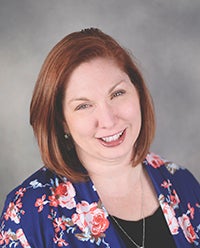Live United: Food insecurity is not just an issue during pandemic
Published 9:05 pm Friday, August 7, 2020
|
Getting your Trinity Audio player ready...
|
Live United, by Erin Haag
Our third pop-up pantry hosted at the Albert Lea Family Y was pretty successful. Third time’s the charm: It was not pouring down rain. We handed out boxes of food to 225 families in less than an hour. Unfortunately, the line was still pretty long, so executive director of the Y, Dennis Dieser, and I personally walked the line. We checked in with every single car, making sure that they had information on where else to find food that day in the county, and that they had enough food for the weekend.

Erin Haag
The media showed up toward the end and asked for some television interviews. Out of self-preservation, I haven’t watched them, so hopefully the clips edited together made sense. I was hot, really thirsty and sunburned. I also had taken off my mask to drink some water. One interview was with my mask on, as I felt it was a good example, but I had forgotten to put my ear savers back on, so it kept slipping down. The second one, we took the mask off just for the interview, and I worried about what kind of example I was setting.
Then came the whopper of the question. A reporter emailed me to ask how having so many people turn up for the pop-up pantry demonstrated the need for food in our county. I sent some information about how 25% of our county are food insecure, yet don’t meet the thresholds for food programs. About 8.5% of our population in the county are experiencing food insecurity. She wrote back, asking if there was more specific information to the pandemic only. I wasn’t in a position to really sit down and discuss the issue at depth before her deadline of the story.
Here’s the thing folks. Food insecurity is not just a pandemic issue. All we have to do is look at the statistics of what we already know — and know that it’s worse. That 25% of our county that is food insecure? Until now, they didn’t meet the guidelines to qualify for receiving food.
Those in human service agencies know this. We work every day to try to build a better system. It’s a fine line — how do we ensure that food is going to people that need it without creating barriers for those that need it? Add in sudden changes in economic status, but without the paperwork to prove it because there hasn’t been enough time for that to come through, and families are left in the space in between. Because of this, guidelines have been lifted. Food shelves are not asking in-depth questions. We’re not asking how much money you make, or if you really need the food. Some might take your name, just to keep track of how many different families are coming—because that helps them plan for how much food they need. The UWFC pop-up pantries don’t even ask that. We’ve gotten the maximum we’re able to get each time, a full truck of food. We were trusting that if there’s left over at the end of the pantry, we’d be able to coordinate with local groups to get food to where it needs to go. It took dedicated volunteers, long hours of hauling boxes and a lot of phone calls, but we did — we found groups that needed the food.
During these stressful times, do we really need to know how much of a need there is? When my youngest son was born, friends dropped of meals for us to freeze to help us through the first few months. When we wound up spending weeks in the hospital when he was 3 months old, and brought home a tiny baby with a rare disease and a colostomy bag, we still had food that helped us. The love and caring we felt through food is one of the clearest memories I have of that blurry time.
Let’s do that for everyone. Let’s show our entire community that we have enough food for all. At each pop-up pantry, the line started forming about 8:30 a.m. It may have only taken us an hour to get through our food, but most of the line waited two to three hours. Maybe they “don’t qualify.” But to my way of thinking, if a person feels insecure enough about their finances or ability to access food that they’re willing to give up two to three hours of their time to wait in line, well, that’s all the information I need.
We have two more pop-up pantries. Just a short week away, Aug. 14 will be hosted at the Albert Lea Family Y again. Our last one will be hosted at Clarks Grove First Baptist Church on Sept. 4. Both are from 11 a.m. until 1 p.m. or until food runs out. UWFC is looking for volunteers to help direct traffic, load boxes and put up signs. Social distancing is easy to do, and the jobs range from physical to very light work. Please give our office a call if you’d like to help: 507-373-8670. After those events, there’s still our permanent food resources. Our popup-pantries were only designed to supplement while adjusting to the changes COVID-19 brought us. We’ve brought together our food leaders in the county and collaborated with those across the state. There’s more work to be done, but we’ve got a good-sized dent this summer — a 675 families served sized dent.
Erin Haag is the executive director of the United Way of Freeborn County.


